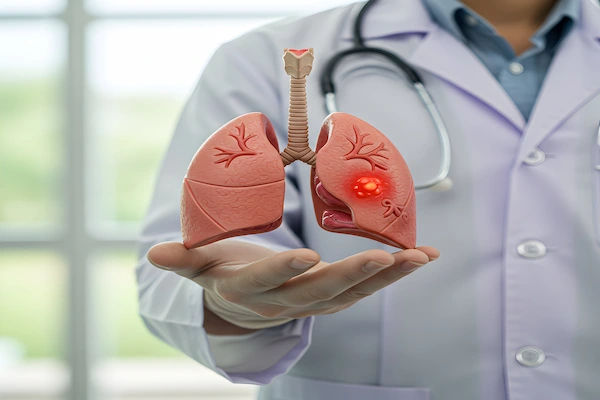Guide to Back Home Faster Short Stay Surgery 0
Explore how short stay surgery allows quicker recovery, minimal hospital time, and a faster return home with safe, effective care.


Introduction
The thought of surgery often brings to mind a lengthy hospital stay, but modern medicine has revolutionised this experience. Welcome to the world of short stay surgery, a patient-centered approach designed to get you from the operating room back to the comfort of your home in the shortest time possible, often within 23 hours or even the same day. This model, also known as ambulatory or same-day surgery, prioritises efficiency, safety, and your well-being. Whether you're facing a minor procedure or a more complex operation, understanding the short stay process can alleviate anxiety and empower you to take an active role in your recovery. This comprehensive guide will walk you through every step, from determining if you're a candidate to mastering your recovery at home. We’ll explore the significant benefits, provide a detailed checklist, and highlight how this approach can lead to a smoother, faster healing journey. Let’s dive in and learn how to plan your quick trip to the hospital.
What Exactly is Short Stay Surgery? The Modern Approach to Care
Short stay surgery is a carefully planned model where a patient is admitted for a surgical procedure, monitored during a recovery period, and discharged within a specific timeframe, typically 23 hours or less. This doesn't mean the care is rushed; rather, it reflects advancements in surgical techniques (like minimally invasive laparoscopy), improved anaesthesia protocols that wear off faster, and a better understanding of recovery pathways.
The core philosophy is that for appropriately selected procedures and patients, recovering at home is not only preferred but often beneficial. It reduces exposure to hospital germs and allows you to rest in a familiar, low-stress environment.
Short Stay vs. Inpatient: What’s the Difference?
The key difference lies in the planned duration of your hospital stay.
- Inpatient Surgery: Requires an overnight stay in the hospital for one or more nights. This is typically for major surgeries,
patients with significant underlying health conditions, or those who need continuous, complex post-operative care. - Short Stay Surgery: The plan from the outset is for you to go home on the same day or the following morning. The
entire process from pre-op preparation to post-op monitoring is streamlined for efficiency and safety within this
condensed timeline.
Are You a Candidate for a Short Stay Procedure?
Not every patient or procedure is suitable for a short stay. Your surgical team will conduct a thorough evaluation based
on:
- The Type of Procedure: Common short stay procedures include cataract surgery, hernia repairs, gallbladder removal,
tonsillectomies (in adults), and many orthopaedic scopes. - Your Overall Health: Your doctor will assess your heart, lung, and kidney function, as well as manage conditions like
diabetes or hypertension. - Your Home Environment: It’s crucial that you have a responsible adult to take you home and stay with you for the first
24 hours, and that your home is a safe place to recover. - Proximity to Hospital: Living within a reasonable distance from the hospital is often a requirement in case of
emergencies.
Consult a General Surgeon for the best advice
The Benefits of Getting Back Home Faster
Choosing a short stay surgery model comes with a host of advantages that contribute to both physical and psychological well-being.
- Reduced Cost: By minimising the use of hospital beds, nursing time, and other inpatient resources, short stay surgeries are significantly less expensive than traditional inpatient procedures.
- Minimised Disruption: You can return to your daily life and routines much faster, reducing the impact on your work,
family, and personal commitments. - Patient Satisfaction: Most patients report higher satisfaction levels when they can recover in their own homes.
Lower Risk of Hospital-Acquired Infections
Hospitals, while centers of healing, are also environments where bacteria like MRSA can linger. The shorter your exposure, the lower your risk of contracting a hospital-acquired infection (HAI). For patients with compromised immune systems, this is a particularly significant benefit of a short stay.
Enhanced Comfort and Recovery in Your Own Space
There’s no place like home for a reason. Recovering in your own bed, with access to your own food, and surrounded by family provides immense psychological comfort. This reduced stress can positively influence your physical recovery, leading to better pain management and overall well-being. Sleep is also often more restful and uninterrupted at home, which is crucial for healing.
Your Pre-Surgery Checklist: Setting the Stage for a Smooth Stay
Proper preparation is the single most important factor in ensuring your short stay is a success. A well-prepared patient is a safe patient.
- Attend All Appointments: Don't skip your pre-admission testing or consultations with your surgeon and anaesthesiologist.
- Arrange Support: Confirm who will drive you to and from the hospital and who will stay with you for the first night. This is non-negotiable.
- Prepare Your Home: Set up a comfortable recovery area with pillows, blankets, remote controls, water, and snacks within easy reach. Consider preparing meals in advance.
Medical Evaluations and Tests You Might Need
Your surgeon will order specific tests to ensure you are fit for surgery. These might include blood tests (like a complete blood count), an ECG to check your heart, and a chest X-ray. Apollo24|7 offers convenient home collection for these pre-operative tests, saving you a trip to the lab. Be transparent about all medications, vitamins, and supplements you are taking.
The Day Before: Medications, Fasting, and Logistics
You will receive strict instructions regarding fasting (typically no food or drink after midnight) to prevent complications during anaesthesia. Clarify which medications you should take with a small sip of water and which to pause. Pack a small bag with essentials like your ID, insurance card, a list of medications, and comfortable clothes to wear home.
A Day in the Life: What to Expect on Surgery Day
Understanding the timeline can ease nerves. Here’s a general overview.
Arrival, Admission, and Pre-Op Prep
You’ll arrive at the hospital or surgical centre 1-2 hours before your scheduled procedure. After completing admission paperwork, you’ll change into a hospital gown. A nurse will check your vital signs, insert an IV line, and your surgeon and anaesthesiologist will visit you to answer any last-minute questions.
The Procedure and Immediate Recovery
You’ll be taken to the operating room. After anaesthesia is administered, the procedure will be performed. Afterwards, you’ll wake up in the Post-Anaesthesia Care Unit (PACU), where nurses will closely monitor you as the anaesthesia wears off. Once you are alert, stable, and your pain is under control, you’ll be moved to a more comfortable recovery area.
The Road Home: Understanding Discharge Criteria
You won’t be discharged simply because a clock has run out. You must meet specific clinical milestones to ensure your safety.
Key Milestones You Must Meet Before Leaving
These criteria are standard and non-negotiable:
- You are fully awake and alert.
- You can drink fluids without nausea or vomiting.
- Your pain is manageable with oral medication.
- You can walk safely (with assistance) to use the bathroom.
- Your vital signs (blood pressure, heart rate) are stable.
- You have urinated successfully, if required for your procedure.
Your Take-Home Kit: Instructions and Medications
Before you leave, you’ll receive detailed post-operative care instructions. This includes:
- Wound Care: How to keep your incision clean and dry.
- Medication Schedule: What pain relievers or antibiotics to take and when.
- Activity Restrictions: Guidance on lifting, driving, and returning to work.
- Emergency Contacts: A clear list of who to call and when, especially for surgery recovery warning signs.
Mastering Your Recovery at Home
The first few days at home are critical. Follow your doctor’s orders diligently.
The First 24 Hours: Rest, Hydration, and Pain Management
Prioritise rest. Have your caregiver help you with meals and movement. Stay hydrated by drinking plenty of water.
Take your pain medication as prescribed, before your pain becomes severe. It’s easier to manage pain than to chase it.
Warning Signs: When to Call Your Doctor
While some discomfort is normal, certain symptoms require immediate attention. If you experience any of the
following, consult a doctor online with Apollo24|7 for further evaluation:
- Fever above 101°F (38.3°C).
- Uncontrolled pain despite medication.
- Signs of infection at the incision site (increased redness, swelling, warmth, or pus).
- Chest pain or difficulty breathing.
- Persistent nausea or vomiting.
- Calf pain or swelling, which could indicate a blood clot.
Common Procedures Perfect for a Short Stay
A wide range of surgeries are now routinely performed as short stay procedures. These include:
- Ophthalmology: Cataract surgery, LASIK.
- General Surgery: Laparoscopic gallbladder removal, hernia repairs, haemorrhoidectomies, breast biopsies.
- Orthopaedics: Knee arthroscopy, carpal tunnel release, shoulder surgery.
- Urology: Vasectomy, cystoscopy.
- ENT: Tonsillectomy (in adults), sinus surgery, tympanostomy (ear tubes).
Conclusion: Embracing a Smarter, Faster Path to Healing
Short stay surgery represents a significant leap forward in patient care, aligning medical efficiency with human comfort. By understanding the process from start to finish, you can approach your procedure with confidence, knowing that every step is designed for your safety and swift recovery. This model empowers you to be an active participant in your healing journey. Remember, the goal is not just to get you home faster, but to ensure you have the tools and knowledge to recover successfully there. By following your medical team's guidance and listening to your body, you can navigate your short stay experience smoothly and return to your life with minimal disruption.
Consult a General Surgeon for the best advice
Consult a General Surgeon for the best advice

Dr. Binay Agarwal
General and Laparoscopic Surgeon
15 Years • MBBS, MS General Surgery
North Dumdum
Dum Dum Medical Centre, North Dumdum
Dr. Deepak G
General Surgeon
2 Years • MBBS, MS
Bengaluru
A.V.S Clinic, Bengaluru

Dr. Deepak Thakur
General Surgeon
10 Years • MBBS, MS General Surgery
Patna
Health Care Clinic, Patna
Dr. Siva Prasad Arja
General Surgeon
4 Years • MBBS, DNB (GENERAL SURGERY)
Hyderabad
Seasons hospital, Hyderabad

Dr. Balachandar Kariappa Reddy
General Surgeon
16 Years • MBBS, DNB (Gen. Surg.), FMAS.,FAIS
Chennai
Apollo Hospitals Greams Road, Chennai
(75+ Patients)
Consult a General Surgeon for the best advice

Dr. Binay Agarwal
General and Laparoscopic Surgeon
15 Years • MBBS, MS General Surgery
North Dumdum
Dum Dum Medical Centre, North Dumdum
Dr. Deepak G
General Surgeon
2 Years • MBBS, MS
Bengaluru
A.V.S Clinic, Bengaluru

Dr. Deepak Thakur
General Surgeon
10 Years • MBBS, MS General Surgery
Patna
Health Care Clinic, Patna
Dr. Siva Prasad Arja
General Surgeon
4 Years • MBBS, DNB (GENERAL SURGERY)
Hyderabad
Seasons hospital, Hyderabad

Dr. Balachandar Kariappa Reddy
General Surgeon
16 Years • MBBS, DNB (Gen. Surg.), FMAS.,FAIS
Chennai
Apollo Hospitals Greams Road, Chennai
(75+ Patients)
More articles from Rehabilitation
Frequently Asked Questions
1. How soon after short stay surgery can I drive?
You must not drive for at least 24 hours after receiving anaesthesia. Beyond that, your ability to drive depends on your pain levels, whether you are taking narcotic pain medication, and your surgeon's specific advice. A good rule of thumb is to wait until you can perform an emergency stop without hesitation and are no longer on sedating medications.
2. Will my insurance cover a short stay procedure?
Most insurance plans cover short stay surgeries that are deemed medically necessary. In fact, they often encourage it as a cost-effective alternative. However, it is essential to confirm coverage with your insurance provider and the hospital beforehand to understand any co-pays or deductibles.
3. What if I don't feel ready to go home after my short stay surgery?
Patient safety is the top priority. The discharge criteria are strict for a reason. However, if you genuinely do not meet the milestones (e.g., you are in uncontrollable pain or are persistently nauseous), the clinical team will not discharge you. You will be admitted for further observation and care. Always communicate openly with your nurses about how you feel.
4. Are the pain management options as effective for recovery at home?
Yes. You will be sent home with a prescription for oral pain medications that are very effective for managing post-operative pain. The key is to stay ahead of the pain by taking medication on schedule as directed, rather than waiting for the pain to become severe.
5. What should I have ready at home for my recovery?
Prepare a 'recovery station' with plenty of water and healthy snacks, your phone and charger, books or TV remote, all your medications, extra pillows for propping up limbs or yourself, and comfortable, loose-fitting clothing. Having meals pre-made or arranging for food delivery is also a great idea.

